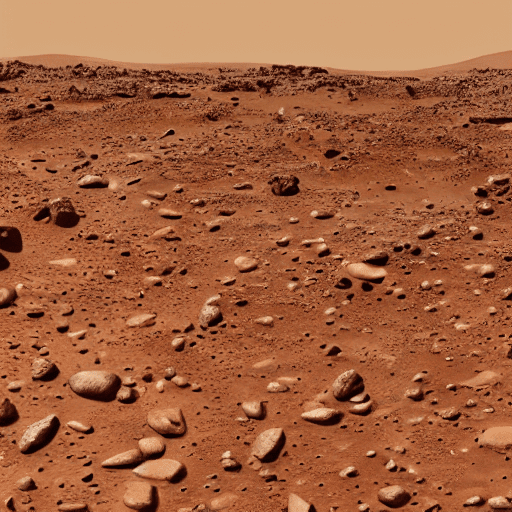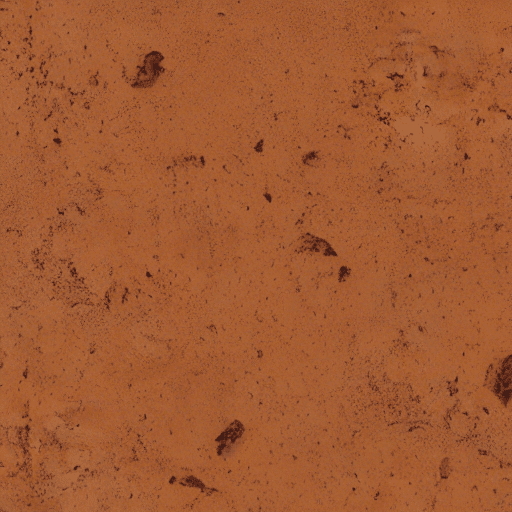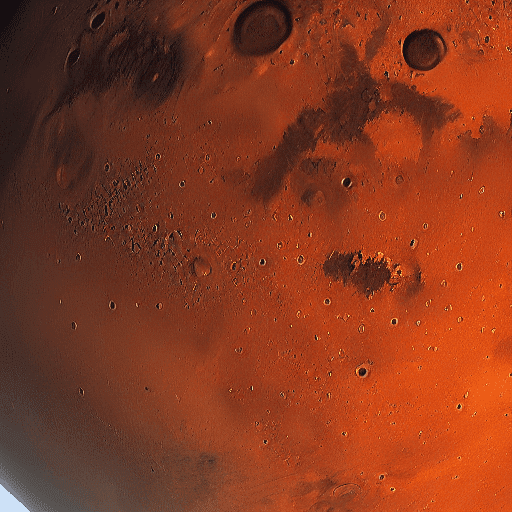There are many questions that still remain about ‘the red planet’.
One of the most puzzling is why is Mars red.
Theories abound, but there is still no consensus on what the true answer is.
Let’s blast-off and review some of the possible explanations for why Mars is red.
Mars is red because it is covered in rust.

Explain It To A Child
The planet Mars is red because of the high concentration of iron oxide in its soil. When the iron oxidizes or rusts, it turns red. This happens on Earth too, but Mars has a much higher concentration of iron oxide. Plus, the Martian atmosphere is very thin, which allows for more oxidation to take place.
Iron oxide (Fe2O3), the compound that makes iron rust, is very abundant on Mars. Nearly half of the Martian surface is made up of rusty terrain. The orange-red hue that we see from Earth is due to the presence of dust and fine particles in the atmosphere, which scatters sunlight in all directions. Without this atmosphere, Mars would look like a dull grey world.
Why is Mars red
The planet Mars is red because of the high concentration of iron oxide in its soil.
When the iron oxidizes or rusts, it turns red.
The same process happens here on Earth, but Mars has a much higher concentration of iron oxide.
In addition, the Martian atmosphere is very thin, which allows for more oxidation to take place.
Over time, the rust from Mars’ rocks and soils has been blown around by the wind, creating the red color that we see today.
What are the different theories about why is Mars red?
There are a few different theories about why Mars is red. One theory suggests that the planet was once home to oceans of liquid water. Over time, the water evaporated and left behind rust-colored minerals.
Another theory posits that a huge meteor impact released iron-rich minerals into the atmosphere, where they eventually settled on the surface.

A third possibility is that Mars has always been dry and dusty, and the red color is just the result of years of erosion. Whatever the reason, there’s no denying that Mars is one of the most distinctive-looking planets in our solar system.
The most popular theory – is that Mars is covered in rust
The most popular theory about Mars is that its red color is due to a layer of rust that covers the planet.
This theory is based on the fact that Mars has a very thin atmosphere and no liquid water, two conditions that are necessary for rust to form.
However, there is some evidence that Mars may actually be covered in another type of iron-rich minerals, such as hematite.
In any case, the reddish hue of Mars is one of its most distinctive features, and it continues to be a source of fascination for scientists and laypeople alike.

How iron oxide creates the red hue on Mars
The red hue of the Martian landscape is caused by the presence of iron oxide in the soils and rocks. When iron oxidizes, it turns from a ferrous state (Fe2+) to a ferric state (Fe3+).
This change in valence state causes the color of the iron to change from silver to red.
The amount of oxygen available on Mars is sufficient to allow for this oxidation to occur, resulting in the familiar red hue of the Martian surface.
Interestingly, the presence of iron oxide also makes Mars more hospitable to life.
Iron is an essential nutrient for many organisms, and the presence of iron oxide makes it more easily available for plants and other organisms to use. In this way, even though it may not be immediately apparent, the red hue of Mars is actually a sign of its potential habitability.
Other explanations for why Mars is red
In addition to the Iron Oxide mentioned earlier, there are a few other explanations for why Mars is red.
One possibility is that the planet was once covered in a thick layer of red dust. Another possibility is that Mars has always had a thin atmosphere, and the red hue is the result of years of dust storms.
Whatever the reason, it’s clear that Mars has always been a red planet.
Even today, when viewed from Earth, Mars appears redder than any other planet in our solar system. So whatever the cause, it’s likely that the Red Planet will continue to fascinate us for many years to come.
Which theory do you think is correct about why Mars is red?
Theories about why Mars is red abound, but only one can be correct.
One theory suggests that the red color is due to the high iron content in the Martian soil. Another theory posits that Mars was once a wetter, more hospitable planet and that the red color is due to rust formed by oxidized iron in the Martian rocks.
A third theory suggests that a global dust storm covered the planet in a reddish haze. So which of these theories is correct? The answer may lie in a combination of all three.
The high iron content in the Martian soil could create a rusty hue, while global dust storms could add a red tint to the atmosphere. Whatever the case may be, it’s clear that Mars has been red for a very long time.
Therefore, mars are red because of the high iron content in the soil, global dust storms, and oxidation.
Article Sources
Jacks of Science sources the most authoritative, trustworthy, and highly recognized institutions for our article research. Learn more about our Editorial Teams process and diligence in verifying the accuracy of every article we publish.
